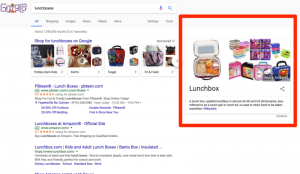Do you have questions about how to manage your social media accounts? Are you feeling overwhelmed by social and are not sure where start — or what tools you should use to manage your accounts? Do you need to create a social media strategy?
Keep reading to learn about basic things you can do to manage social networking sites for your small business.
Why You Should Use Social Media
There are many reasons why small brands should consider using social media. Besides being low (to no) cost, social media can be an excellent way to get more eyes on your company and services. One word: exposure!
Other reasons include:
- Social listening. You’ll be in a prime position to hear what clients and prospects think about your brand (social listening)
- Engagement. When you find “your people” on social, you’ll have the opportunity to engage with and get to know them.
- Social search. Lots of people head to search engines to look for companies that offer products and services that will solve their problems. But, they also look for solutions on social. It’s not unusual for someone to check your Facebook or Twitter page to learn more about you. If you don’t have a profile, they move on. To another company.
- Better SEO. Social and SEO go together like peanut butter and jelly. When you share your blog posts and other valuable content on social, you increase the opportunities to get more eyes on your website. More eyes can translate into increased traffic to your site.
Your social sites also show up in the SERPs. You can test this out yourself: type in your company name in your search engine and see what you get.
Here’s a quick video of what Google returned when I searched “dallisonlee.” You’ll notice that Twitter and Facebook showed up in the top five results (#’s 3 and 4, respectively). Every other site was a social site with Google+ as the final result on page one.
Social Media 101: How to Strategically Manage Your Accounts
You might be familiar with LinkedIn, Instagram, and Facebook, but did you know that are many more social networking sites? Of course, you don’t have to join every social network out there. In fact, you really should be selective about the social platforms you’ll use and maintain for your company.
Sure, it’s okay to grab your company name for several social sites before someone else does. But, when you’re choosing social sites to use regularly, you’ll want to be a bit more picky.
If you select too many, you’ll run short on time and get overwhelmed with all that you have to do to for each of your accounts, like:
- Posting and reading valuable content
- Connecting with influencers
- Engaging with clients and prospects
And, that’s not all you’ll need to do. You’ll also have to figure out what types of content you want to be known for (and share), how often you’ll post to each network, and track what’s working and what’s not working.
So, if you’re using 10 social networks, that’s means a lot of work for you or you’ll need to pay your intern or virtual assistant to handle it for you. I’m all for delegating, but being strategic about where you put your focus and how you spend your dollars are pretty important, don’t you agree?
As you begin to craft your social media strategy, think about the steps below.
How to Choose the Right Social Networks
As I mentioned before, you should be choosy. But, before you decide which social media networks will get your undivided attention, you’ll have to first do these three things:
1. Identify your ideal clients
In order to choose the right social network, identify who your ideal clients are.
- What are their characteristics?
- Are they boomers or millennials?
- Do they use social media?
- What do they like to do in their spare time?
- What types of activities interest them?
2. Determine which social networks those clients use regularly
This is the second thing you need to figure out. When you want to connect with people in person or online, you have to be where they hangout. So, it will be important to determine which social platforms your ideal customer likes using because you’ll want to be there, too.
3. Figure out if the network fits with your content, product, and services
And, finally, you want to ensure that the social platform fits with your company, content, products, and/or your services. Some social networks are just really well suited to certain industries.
For example, if you’re a landscaper, food blogger, jewelry maker, or makeup artist, you’re offerings will likely to fit well with Pinterest and Instagram, both of which allow users to upload lots of amazing imagery.
You can really show off your products and skills (or even testimonials) using photos and video. YouTube would likely be another great network for those niches. Don’t forget that you can give sneak peeks with Instagram’s 15-second videos, too! Did I mention that Facebook Live is also an option?
As you can see, it may be hard to narrow it down to one or two specific social networks, or to figure how you might use each one. It can be helpful to take a look at the statistics and demographics to see which groups use particular platforms. If you’re don’t know this information, no worries. This blog post from the folks over at Buffer can help.
One more thing — you might also want to check which networks your competition uses to get an idea for the networks you might want to start with.
Three Must-Have Social Media Tools
Social media has several moving parts. You’ve got to keep up with sharing valuable, eye-catching content at the right time. These next tools will help you to do just that.
1. Link shortener
No matter what social media platform you use, whenever you’re sharing links to articles, you have to deal with long links. Not only do they take up too much space, but they’re also ugly. That’s where link shorteners, like Bitly, can help.
Use Bitly to shorten links and to create custom Bitlinks to complement your branding. Once you’ve shared a Bitlink, be sure to check your analytics (how often a link is clicked). With the premium version, you get enhanced statistics and branded short domain links.
Other link shorteners to check out:

2. Image manipulation app
Images can make your blog posts pop and you’re likely to get more click throughs when you use them in your social updates. Images are eye-catching and invite people to find out more. So, use them!
Sometimes, those images need a bit of flair or you might want to use filters or add your logo. You might want to create a graphic quote (I love Wordswag!). PicMonkey and Canva are great tools to remix images or even create one from scratch.
Here are a few more image editing tools to check out:
3. Analytics
How do you know if what you’re doing on social is working? To find out, use an analytics tool to get a detailed view of how things are going.
I know, numbers can be intimidating — especially when they’re not organized in pretty charts and graphs. Don’t be scared of statistics. The data that analytics tools share tell you what you should keep doing and what you may need to change. These tools can also tell you more about your audience and what they find valuable.
Many social media platforms — like Twitter, Facebook (Insights), and Pinterest — have analytics built in, but you can certainly use other apps to give you the deets on how well your social updates are performing.
Social Media Management Mistakes to Avoid
There are many mistakes one could make when using social media, like cursing, drunk posting, and even arguing with followers and clients. In addition, there are three main things you should watch out for when managing your social media accounts.
1. Sporadic (or no) engagement
There’s no point in going through the trouble of setting up several social accounts if you’re not going to spend time using them and interacting with others.
You also don’t want to do drive bys. Instead of binge posting and then disappearing for weeks only to return to do another round of binge posts, consider an alternative posting schedule.
Create a schedule that is more reasonable for you to manage so you can actively monitoring your accounts.
- Come up with a posting plan and strategy that works with your schedule (so you don’t go insane!)
- Pick times during the day or week that you will likely be online (to interact and engage)
- Schedule posts at regular intervals (automate)
- Use analytics to help you determine the times that your followers tend to be online (so they’ll see your content)

2. Not using a social media management app
That leads me to the second mistake that some small brands sometimes make — not using an app to manage your social media accounts.
When you post to all your social networks individually rather than using a dashboard app, you may end up getting overwhelmed because of how much time you’ll need to manage each one. Relying on your memory means that you’ll likely forget to post to a particular account.
A social media dashboard can help you to:
- Easily manage most (if not all) of your accounts from one central location
- Consistently share and schedule updates
- Regularly interact with others
- See analytics in one spot
- Collaborate with team members even if your only team member right now is your VA
Some dashboards are simple and others are very robust. Before choosing a social media management tool, be sure to think about the actions you need to take.
- Do you need to automate your updates and interact with others?
- Are you just looking for a scheduling tool because you’ll be interacting in real time?
- Do you need to share content to several or just a few social networks?
- Do you have a team that will need to use the dashboard?
- Will you need in-depth or simple analytics?
Some social media management apps to consider using include old favorites like Hootsuite and Tweetdeck.
But, there are other apps as well like:
3. Inconsistent social presence
If you social presence is fragmented, it will be difficult to build a recognizable brand. So, make sure that your company has the same look and feel on each social media channel you use. Think of your social accounts as an extension of your brand and primary property — your website.
For example, you probably should use:
- The same profile photo and/or signature across all your sites
- Your brand colors across your social sites, blog, and website
That doesn’t mean that all the sites you use need to look exactly the same, but each pages should reflect your brand in an easily recognizable way. And, your core focus on each needs to be clear.
To get an idea of what I mean, check out these examples of brands that have a cohesive look and feel across their social channels and on their website:
Digital & Social Articles on Business 2 Community
(51)
Report Post






